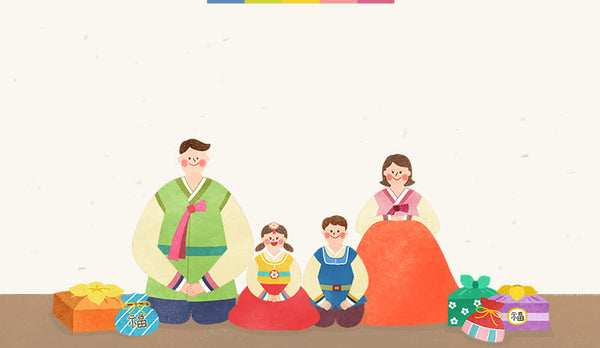Why Does South Korea Celebrate Lunar New Year?

South Korean new year usually occurs in January or February on the second new moon after the winter solstice. In South Korea, the lunar new year is a national festival when family members gather and perform Korean rituals, eat traditional food and play folk games. This event is one of the most important traditional Korean holidays.
Several nations worldwide follow the Gregorian calendar and celebrate the new year on 1st January. However, Koreans celebrate the lunar new year, which has a history.
If you’re curious about the history of the Korean new year and how Koreans celebrate the new year, read this post until the end.
What Is Korean New Year Called?
Korean new year is called “Seollal.” It is a national holiday celebrated on the second new moon after the winter solstice. Families gather and perform new year rituals and wish for the coming year’s prosperity. In 2022, the Korean new year is on Tuesday, 1 February. The spellings of Seollal look like Seol-Nal in Korean Alphabet (Hangeul), but it is pronounced Seollal in Korean to make it easy to say.
What Is the Origin of Seollal?
The origin of Seollal is traced back to traditional Chinese Confucianism. The first-ever record of Seollal celebrations is found in the history of Silla, the old kingdom, from 57 B.C. to 935 A.D. These celebrations have records in the “book of Sui” and the “book of tang.” In addition, the Seollal celebrations have been recorded by the officials of the Joseon Dynasty that ruled between 1392 to 1897. According to the historical records of Goryeo in 13 century BC, New year was one of the nine Korean festivals.
Is Seollal the Same as Chinese New Year?

Seollal is influenced by China and is celebrated on the same date as the Chinese New Year. However, there may be a difference of 1 day every several years in rare cases. Korean new year is based on the lunar cycle, and each year is named after 12 animals. The list of animals is repeated after every 12 years. These names are mouse, ox, tiger, rabbit, dragon, snake, horse, sheep, monkey, rooster, dog, and pig.
How Long Does Seollal Last?
The Korean new year or Seollal lasts for three days. It includes a day before Seollal, new years’ day itself, and the day after Seollal. The families gather at the house of their elders to show their respect for their ancestors and elders. Ancestor worship is also a ritual of the holiday. During Seollal, Koreans not only travel in their country but also worldwide.
Seollal Traditions and Practices

In Korea, the Christmas event is spending time with loved ones, while the new year is a purely family-based holiday. They visit elders, parents, and grandparents. In fact, Seollal is the busiest time in South Korea. If you plan to visit South Korea during Seollal, make sure to book tickets in advance.
Here are some of the Seollal traditions.
Sebae: It is a Korean new year tradition in which young people bow deeply with hands close to the ground to greet their elders. They use words 새해 복 많이 받으세요 (saehae bok mani badeuseyo), which means have lots of luck in the new year. In return, elders reward them with blessings and money called 세뱃돈 (sebaetdon).
Hanbok: Mostly, they wear Hanbok while performing sebae. Hanbok is a traditional Korean costume that they wear on special occasions, including the new year.
Charye: Charye is a tradition in which Koreans bow in front of family food tablets arranged for ancestors to show respect.
Seollal Food: The new year’s most common Korean traditional food is 떡국 (tteokguk) or rice cake soup. The white color of this dish symbolizes purity. Eating this food on New Year’s Eve makes you one year older. 전 (jeon) is another Korean new year dish.
Seollal Games: The common game played on Seollal is 윷놀이 (yunnori); it requires two teams and four special sticks. Kite flying and “neol ddwiggi” are equally popular as Korean new year games.
Gift Giving: Besides all other activities, gift-giving and receiving is a custom of New Year’s Eve in Korea. Not only do family members share gifts, but companies also share gifts with their employees.
Final Thoughts
Koreans celebrate the Lunar new year because Chinese culture influences their traditions. The Korean new year is called Seollal, and it occurs in January or February after the second moon of the winter solstice. The Korean new year celebrations are unique and last for three days. The Korean new year traditions represent that Koreans are a family-oriented nation.


